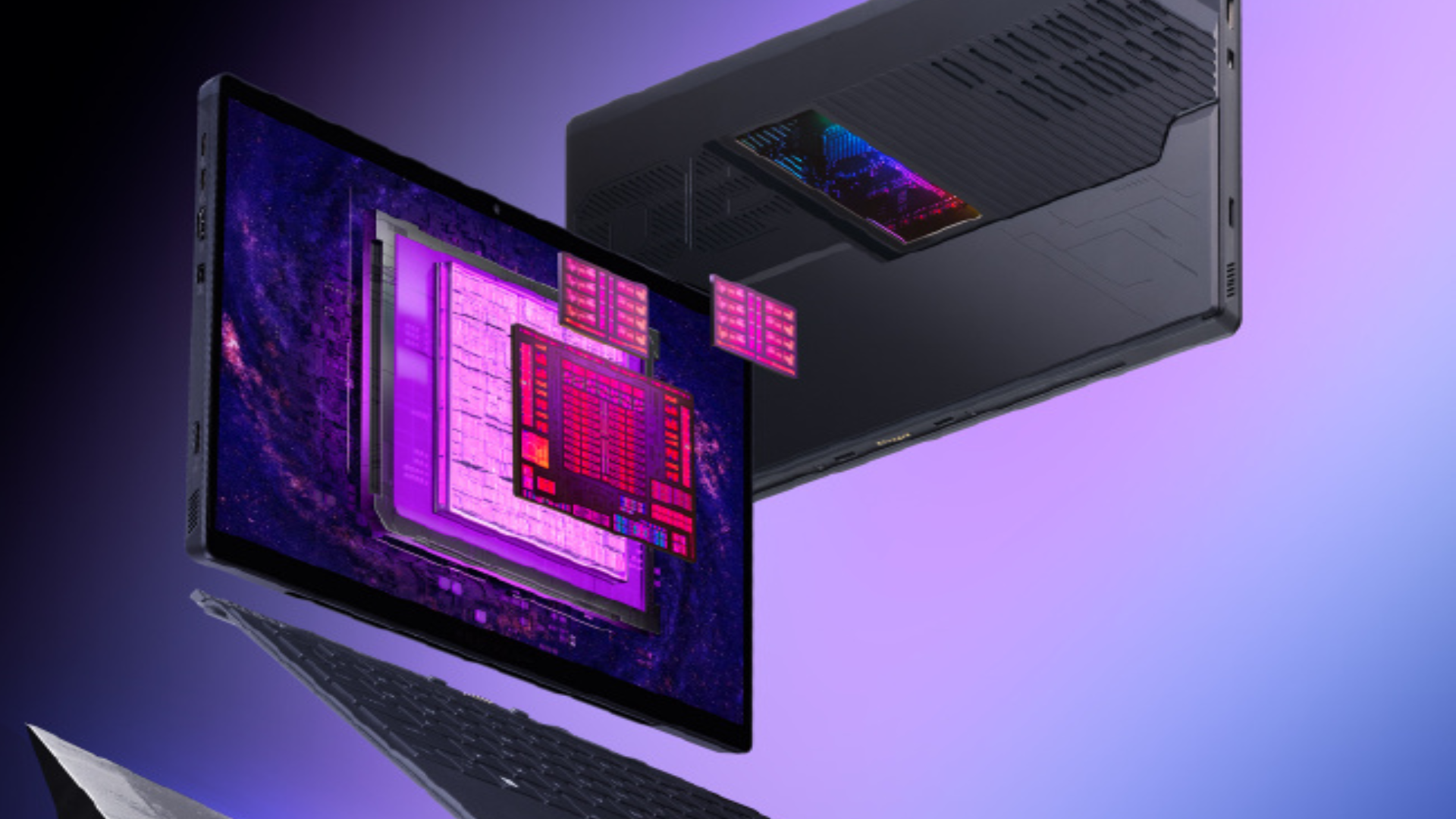AMD’s beastly Strix Halo APUs might be closer than you expect, with reviews reportedly going live tomorrow per hardware leaker HXL at X (formerly Twitter). This rumor follows teasers from various content creators. Even Asus has announced a release date for its high-end ROG Flow Z13 laptops; slated for a February 25 launch. We’re yet to hear more from HP regarding its Strix Halo-equipped laptops and mini-PCs, but they should follow shortly afterward.
AMD pulled the veil off the Ryzen AI Max+ series, codenamed Strix Halo, at CES last month. Claimed to rival Nvidia’s RTX 4070 mobile, AMD has equipped the top-end config with a beefy 40 Compute Unit integrated GPU based on RDNA 3.5, hosted by the massive I/O die in the center. To the north are two Zen 5 CCDs with up to 16 cores / 32 threads and 80MB of total L2 and L3 cache, capable of pushing 5.1 GHz. The entire package is fed by 128GB of unified memory, where 96GB can be dedicated to the iGPU alone. AMD allows OEMs to configure these APUs between 45W and 120W, depending on the device.
Strix Halo reviews are reportedly embargoed until tomorrow. On-shelf inventory will be limited to two laptops and a mini-PC from HP and Asus, but wider adoption is expected as demand grows. In addition, Asus confirmed its “Illusion X 2025” laptops (the Chinese variant of the ROG Flow Z13) featuring AMD’s Ryzen AI Max + chips, will launch on February 25 in a post on Weibo.
The 2-in-1 Flow Z13, functioning both as a laptop and a tablet, is configurable with the Ryzen AI MAX 395+, 128GB of LPDDR5X memory, a 13.4-inch 2.5K IPS display at 180 Hz with HDR support, and a 70Wh battery. All this power comes at a steep price of $2,699 which is comparable to high-end gaming laptops. Still, you get the advantage of a better battery life and more memory for inference. We’d love to see Strix Halo-powered mini-PCs but only HP’s Z2 Mini G1a has been announced thus far, with no set release date.
Strix Halo might easily stand as one of AMD’s most innovative and radical designs in recent memory. These APUs are designed to compete against Apple’s M-series SoCs and mobile workstations outfitted with dedicated Nvidia graphics. Given that AMD’s discrete GPUs never really took off in the laptop space, Strix Halo could signal a more APU-focused future, though it could be a while until we see a potential Strix Halo successor based on RDNA 4.
